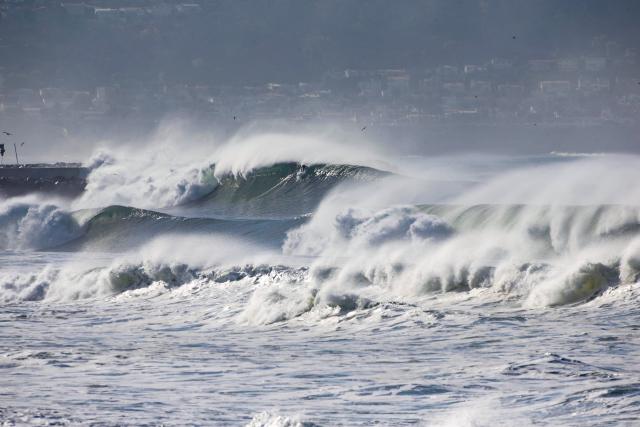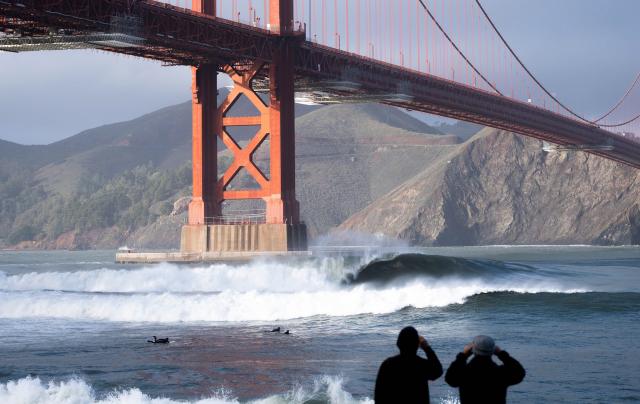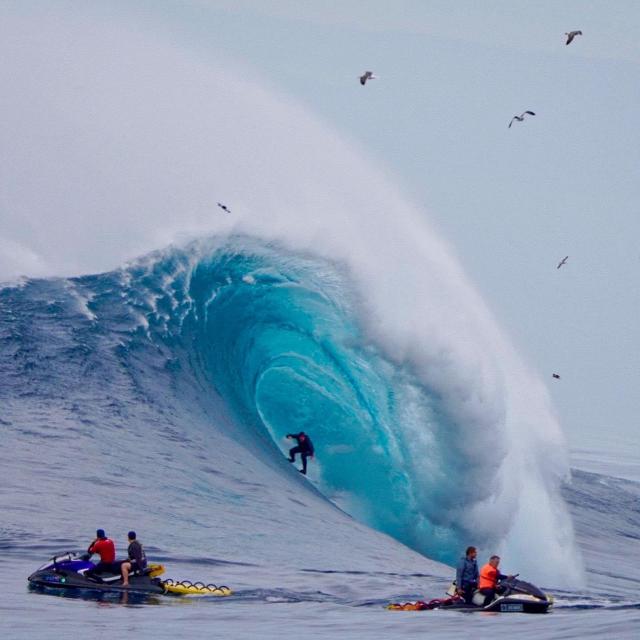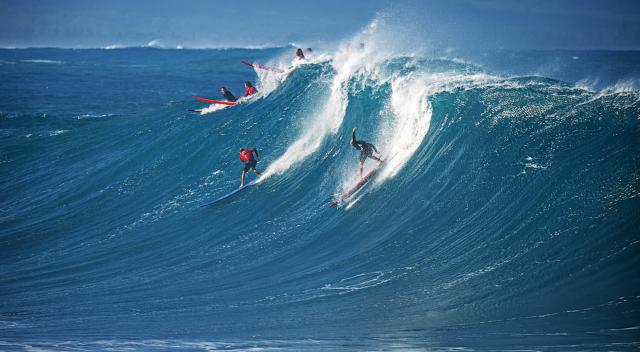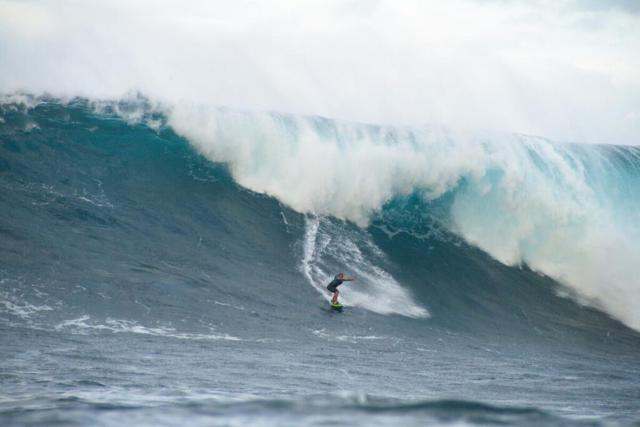Just as our pleasant if hectic Christmas/New Year run of easterly swell started to wane, the northern hemisphere suddenly went nuts.
There are many legendary stories of monster swells around the world, some of which get bigger with every telling, but in the modern world of surf media, where every man and dog on every beach and clifftop on every coast of the world is armed with telephoto and drone and good to go, there’s not so much fibbing any more.
The first mega-swell that I remember being aware of was the Bells Beach Easter swell of 1965, which I learnt about two months after the event courtesy of coverage in Surfing World magazine. Which didn’t stop me from marvelling at the intestinal fortitude of the competitors in a two-hour final of the Bells Classic which was won by a 17-year-old Bonza Bob Conneeley while three more experienced finalists nearly drowned in relentless and huge conditions.
One of them, Rod Brooks, who later became a close friend, once told me: “People often say it gets bigger as the years go by, but that day was big!”
Next in my memory bank is the giant swell that hit the north shores of the Hawaiian islands in December 1969.
It kick-started a winter of memorable waves but is mostly remembered for a day at Makaha when the legendary Greg Noll rode “the biggest wave ever ridden”, paddled in and never surfed again. Greg, who knew no fear, dined out on that wave for the next half-century until his recent death. I loved Greg and his effervescent spirit, but I always thought that wave might have been a little over-stated.
Not so, say two friends who witnessed it from the heights of a Makaha apartment block – Albe Falzon and a very young Shaun Tomson.
This month Europe offered a preview of what was to come as La Nina loses its grip with more than a week of strong, groomed swell on the French Atlantic coast, with perfect overhead days at Hossegor’s beach breaks and some powerful sessions further south at Guethary/Parlementia. Sadly the same swell origins claimed the life of 47-year-old Brazilian big wave veteran Marcio Freire, who died at Nazaré, Portugal on 5 January after having suffered a heart attack following a drilling from a rogue set. This was the first recorded death at the big wave epicentre.
The next day, 6 January, it was California’s turn to cop a flogging as a classic bombing low developed in the North Pacific, delivering the coast’s biggest swell in several decades. But as Surfline editor Marcus Sanders noted in by far the best coverage of the Wild West Swell: “Biggest is not always best. Yeah, we get really excited around giant swells, especially when we can (accurately) throw superlatives around. But in the case of last week’s Wild West swell, truth is, it was only actually good at a handful of spots during short windows of tide and wind… It was a historic swell which’ll be talked about for years, but it (mostly) ended up being more spectacle than participatory.”
The swell wreaked havoc between San Francisco and the Mexican border, as Erika Ritchie reported for the Southern California News Group: “Big waves – some topping 18 feet in Los Angeles County – wreaked havoc as high tides and a winter swell continued to work over the Southern California coastline leading to beach erosion, pier closures, crumbled asphalt parking lots and boats torn from their docks. In the South Bay, piers at three west-facing beaches remained closed as waves more than 15 feet tall pummelled the structures.”
Nevertheless Surfline’s band of fearless photographers braved the elements to provide an amazing pictorial coverage of the swell, and the pockets of protection where surfers managed to ride a few waves.
As the Wild West Swell began to fade, another bombing low popped up north-west of the Hawaiian chain, prompting organisers to call the Eddie Aikau Memorial Big Wave Invitational on at Waimea Bay for “Big Wednesday”, 11 January, the first time it had been green-lighted since 2016. Kelly Slater was called out of the water by lifeguards at an unruly Waimea the next day while attempting a warm-up session, but by that night the event was called off, with a forecast of strong onshore winds set to make it unsurfable.
But this didn’t stop the big wave chargers paddling out, and Surfline provided an all-day live feed of the mayhem.
It appears the Pacific isn’t done yet, and with the first event of the WSL world championship tour set to run at Pipeline from late next week, who knows what we’ve got in store.
Meanwhile, here at home we’ll have to settle for another nice run of east swell to see out the month.

